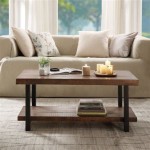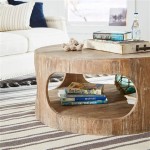```html
What Height Should Your Bedside Table Be? A Comprehensive Guide
The bedside table, often called a nightstand, is a ubiquitous piece of bedroom furniture. It serves as a convenient surface for lamps, books, phones, and other personal items needed within arm's reach while in bed. However, the functionality of a bedside table hinges significantly on its height. A bedside table that is too high or too low can be inconvenient, uncomfortable, and even detract from the overall aesthetic of the bedroom. Therefore, determining the correct height for a bedside table is a crucial aspect of bedroom design and personal comfort.
The ideal height of a bedside table is not a universal fixed measurement. It is a variable figure depending on several factors, including the height of the mattress, the style of the bed frame, and the individual's personal preferences. Understanding these factors and how they influence the optimal bedside table height is essential for selecting the right piece of furniture.
The Importance of Mattress Height
The most significant factor in determining the appropriate height of a bedside table is the height of the mattress. The general rule of thumb is that the surface of the bedside table should be level with the top of the mattress or slightly higher. This allows for easy access to items placed on the table without requiring excessive reaching or bending. A table that is level with the mattress is generally considered the most functional.
When the bedside table is significantly lower than the mattress, reaching for items becomes an awkward and potentially straining movement. The individual is forced to reach downwards and potentially twist their body, which can be particularly uncomfortable in the middle of the night or when trying to avoid waking up fully. Furthermore, if the bedside table is too low, the items on it may be obscured from view when lying in bed, making it difficult to locate them without sitting up entirely.
Conversely, a bedside table that is significantly higher than the mattress can also cause discomfort. Reaching upwards repeatedly can strain the shoulder and neck. Items on a high bedside table may also be more prone to being knocked over or accidentally bumped in the night. This is especially true if the bedside table has a small surface area.
To accurately determine the mattress height, it is important to measure from the floor to the top of the mattress. This measurement should include any mattress topper or bedding that adds to the overall height. Once the mattress height is known, it can be used as a baseline for selecting a bedside table of the appropriate size. Aim for a table that is within a couple of inches of the mattress height, erring on the side of being slightly higher rather than significantly lower.
Considering the Bed Frame and Style
While the mattress height is the primary consideration, the style and height of the bed frame also play a role in determining the ideal bedside table height. Bed frames can vary significantly in height, from low platform beds to more traditional beds with box springs and taller frames. The height of the bed frame will affect the distance from the floor to the top of the mattress, and therefore the required height of the bedside table.
For example, a low platform bed will typically have a lower mattress height, requiring a shorter bedside table. Using a standard-height bedside table with a low platform bed would result in the table being excessively high and impractical. Conversely, a bed with a box spring and a tall frame will typically have a higher mattress height, requiring a taller bedside table. Using a short bedside table with a tall bed would result in the table being too low and difficult to reach.
The style of the bed frame can also influence the aesthetic considerations for bedside table height. For example, a modern bed frame with clean lines may be better suited to a minimalist bedside table that is slightly lower than the mattress. A more traditional bed frame with ornate details may be better suited to a taller bedside table that complements the overall style. The goal is to create a cohesive and balanced look in the bedroom.
When selecting a bedside table, it is helpful to consider the overall style and proportions of the bed frame. The bedside table should not only be functional but also visually appealing and contribute to the overall aesthetic of the bedroom. If possible, it is beneficial to see the bedside table next to the bed frame before making a purchase, to ensure that the height and style are compatible.
Personal Preferences and Individual Needs
Beyond the objective factors of mattress height and bed frame style, personal preferences and individual needs should also be taken into account when determining the ideal bedside table height. These subjective factors can vary significantly from person to person and can greatly affect the overall satisfaction with the bedside table.
For individuals who frequently read in bed, a slightly taller bedside table may be preferable. This allows for easier access to books and reading glasses without having to reach down excessively. A taller table can also provide more space for storing books and other reading materials. Similarly, individuals who use their phones or tablets in bed may prefer a taller table for easier access to these devices.
Individuals with mobility issues or physical limitations may also have specific needs when it comes to bedside table height. For example, someone with limited reach may require a taller table that is closer to the level of their arm when lying in bed. Someone with back pain may prefer a table that is at a height that minimizes bending and twisting.
Personal preferences regarding storage can also influence the choice of bedside table height. If storage is a primary concern, a taller bedside table with drawers or shelves may be preferable. This allows for more ample storage space for books, magazines, medications, and other personal items. Conversely, if minimal storage is required, a smaller and shorter bedside table may be sufficient.
Ultimately, the ideal bedside table height is a personalized decision that should be based on a combination of objective factors and subjective preferences. By considering the mattress height, bed frame style, and individual needs, it is possible to select a bedside table that is both functional and comfortable, enhancing the overall experience of the bedroom.
When shopping for a bedside table, it's advisable to take measurements of your bed frame and mattress height before heading to the store. Some retailers may offer adjustable-height bedside tables, providing flexibility to fine-tune the height based on your specific requirements. Consider also the depth and width of the table to ensure it fits comfortably within the available space beside your bed.
In summary, selecting the right bedside table height requires careful consideration of several factors. Prioritizing mattress height as the primary guide, considering bed frame style, and factoring in personal preferences will lead to a more functional and comfortable bedroom experience. By paying attention to these details, you can create a bedroom that is both aesthetically pleasing and perfectly suited to your individual needs.
```
Should Bedside Table Be Higher Or Lower Than Bed Provincial Home Living

Should Bedside Table Be Higher Or Lower Than Bed Provincial Home Living

How To Choose The Ideal Nightstand Bedside Table Linenme

Should Bedside Table Be Higher Or Lower Than Bed Provincial Home Living

Bedside Table Dimensions How To Choose The Perfect One

Bedside Table Height Debate Higher Or Lower Than The Bed Hudson Furniture

How To Match Bedside Table With Bed A Quick Guide Hirosart

How To Choose The Perfect Table Lamp Size For Any Room

Should Bedside Table Be Higher Or Lower Than Bed Provincial Home Living

A Professional Guide What Is The Best Bedside Table For Your Project Laskasas
Related Posts








